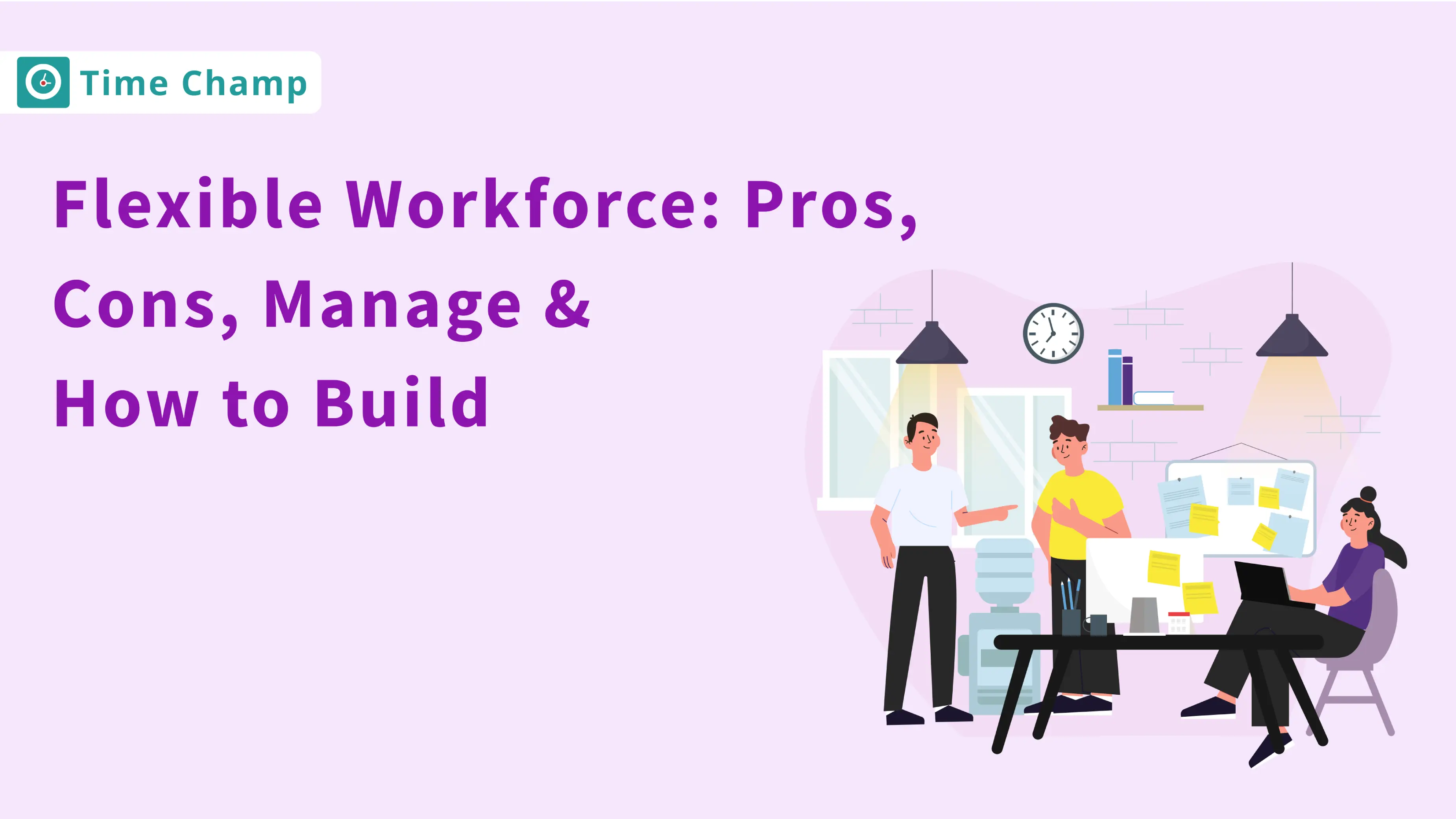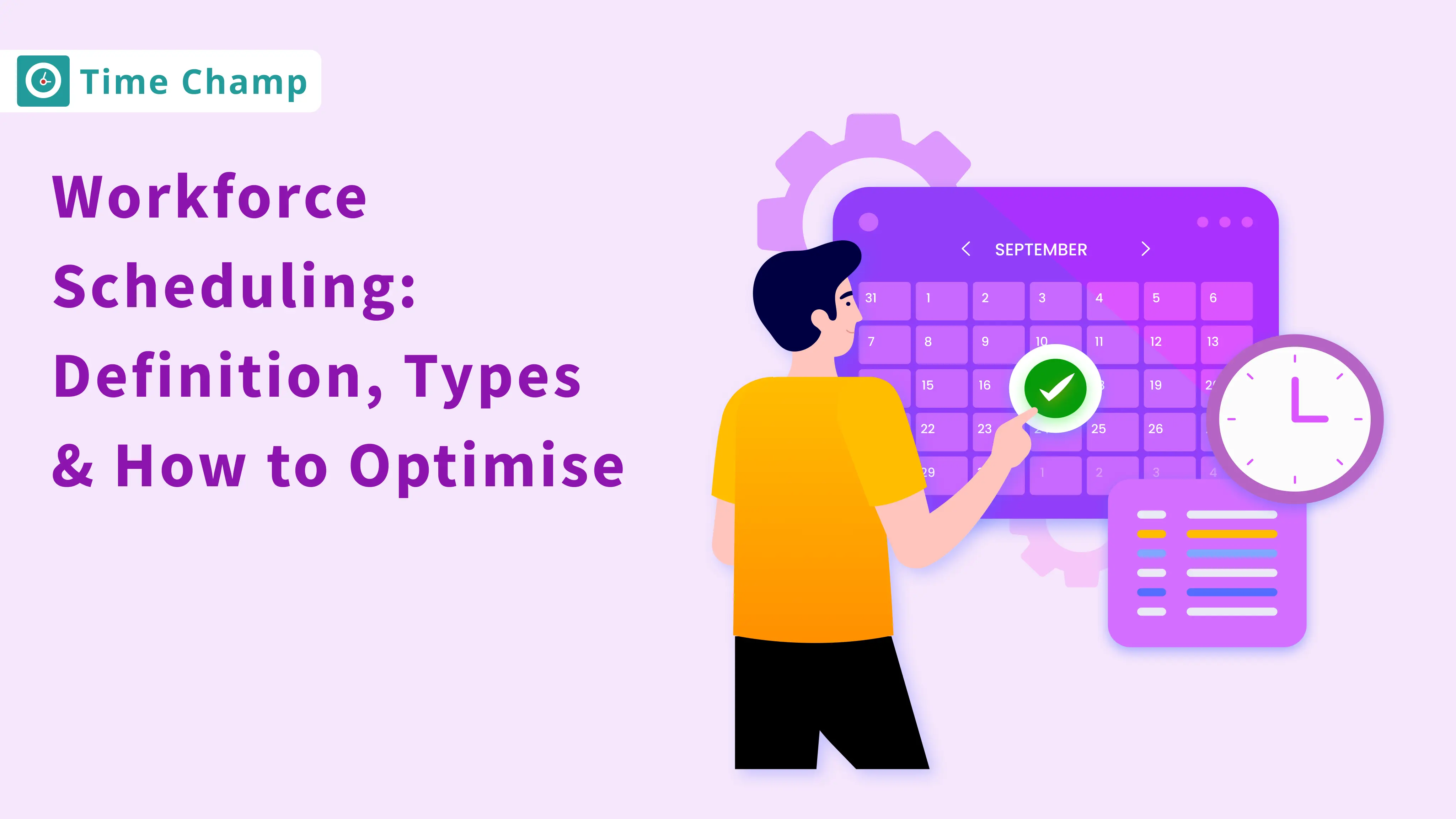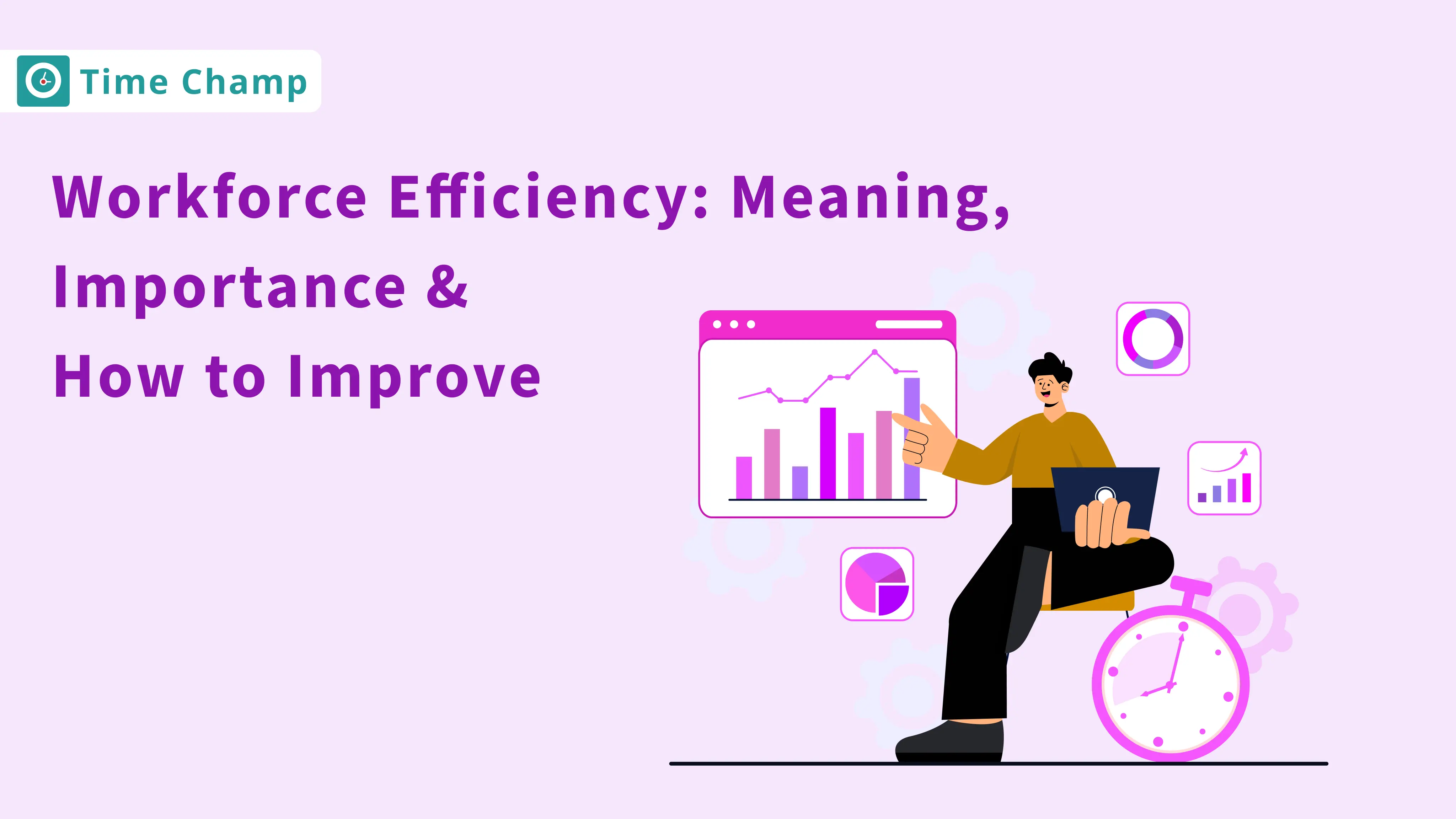Struggling to match your workforce with the changing business needs? A flexible workforce can solve this problem. It allows you to scale up or down the resources, get access to specialised skills when needed, and optimise staff depending on market conditions.
A study by The Economic Times revealed that about 1.81 million workers were part of the flexible workforce employed by ISF companies. In 2025, this adaptability will help you to stay competitive, control costs, and keep the team productive.
Here, in this blog, you will learn what a flexible workforce is, its advantages and disadvantages, how to establish and maintain a flexible workforce.
What is a Flexible Workforce?
A flexible workforce refers to a staffing model in which businesses can adjust team size, roles, and working schedules based on changing needs. It has a combination of full-time, part-time, temporary, freelance, and remote employees, enabling you to remain flexible, cost-controlled, and responsive to market demands.
Using a flexible workforce model enables you to quickly respond to workload changes and seasonal peaks without overstaffing or understaffing the full-time staff. This approach can lead to employee satisfaction , as team members will have greater control of their schedules and work structures.
To balance a flexible workforce, you need clear policies, communication, and effective tools to make it productive and accountable. Without these measures, companies can experience confusion, reduced efficiency, and decreased unity in the team.
Why is a Flexible Workforce Important in Modern Businesses?
According to the Journal of Philanthropy and Marketing , flexible work hours have been found to reduce stress and improve job satisfaction of employees.
Here are the main reasons to adopt a flexible workforce for your team:
1. Keeps Businesses Competitive
A flexible workforce will allow you to adjust fast to market changes, shifts in customer demands, and industry disruptions. It makes you stay ahead of others and enables you to take opportunities immediately.
2. Strengthens Employer Brand
Flexibility in the workforce shows that you value a modern and employee-focused work culture. It helps to attract the best talent and makes your organisation maintain progress.
3. Improves Workforce Resilience
Dynamic structures can assist you in keeping operations in times of pandemics, economic downturns, or supply chain interruptions. This ensures continuity and increases productivity even in unpredictable situations.
4. Supports Long-Term Growth
Workforce flexibility keeps you connected with future skills and changing business strategies. It enables you to drive innovation, expand smoothly, prepare you for new challenges, and ensure long-term growth.
5. Encourages Diversity and Inclusion
Flexible models allow you to access a broader range of talent, including parents, students, and professionals having different work requirements. This creates a diverse workforce that drives creativity, innovation, and enhances decision-making.
What are the 7 Strategies to Create a Flexible Workforce?
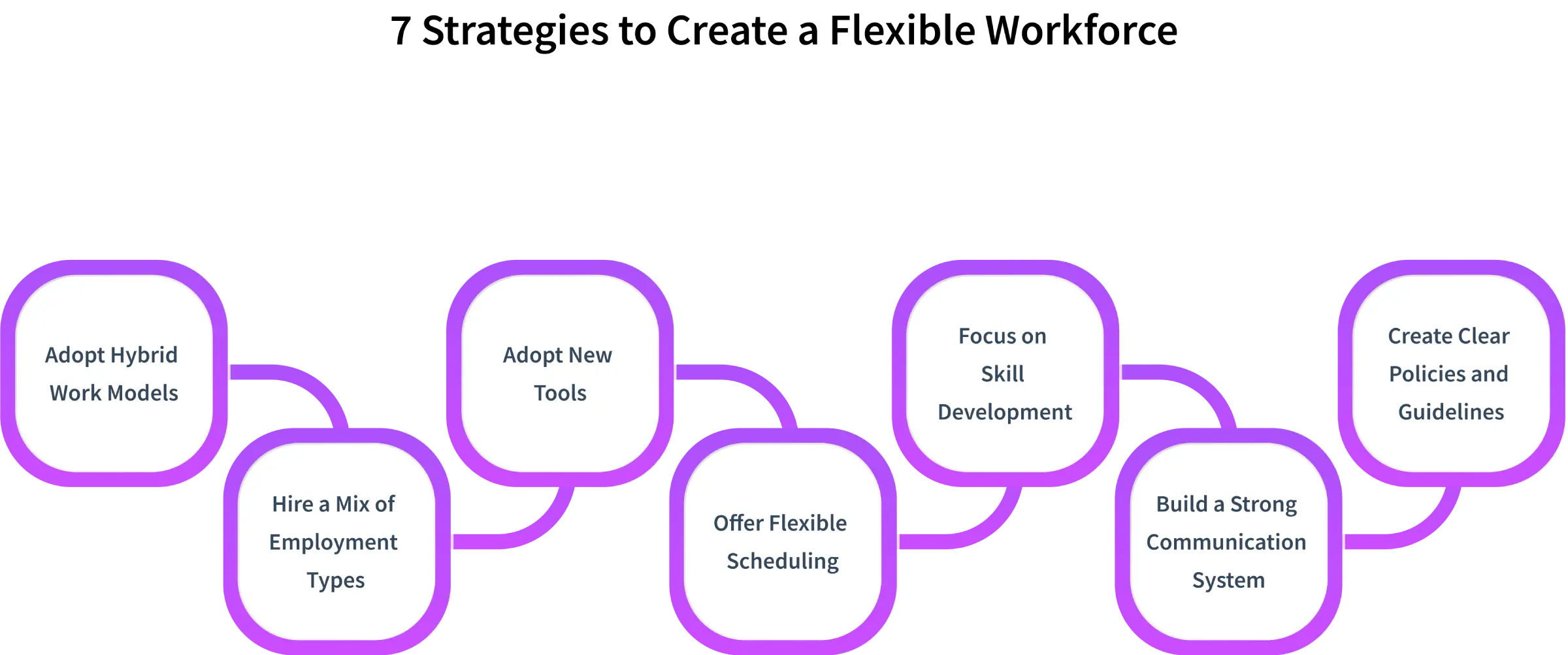
Building a flexible workforce requires the right strategies and planning. Here is how you can manage your teams effectively using a flexible workforce:
1. Adopt Hybrid Work Models
Adopt a hybrid work arrangement that is a combination of office and remote configurations, allowing your teams to work in a flexible environment. This will give better work-life balance , lower office expenses, and expand your talent pool by recruiting those who need flexible schedules. It helps you to maintain collaboration in the office while maintaining flexibility.

2. Hire a Mix of Employment Types
Strengthen your workforce by combining full-time employees with part-time, temporary, or freelance workers. It will allow you to hire more employees when you have peak workloads or urgent tasks without needing to invest in full-time staff. This approach increases the flexibility and cost-efficiency of your staff.
3. Adopt New Tools
Ensure accountability and transparency with accurate tools. Time-tracking software , project trackers, and workforce management systems allow you to keep up with your team at various working locations. These tools can also help you to get real-time insights, make smarter decisions, and keep your teams more efficient.
4. Offer Flexible Scheduling
Increase employee satisfaction and decrease absenteeism by giving your employees the ability to control their working schedules. Flexible shifts help your team to find a balance between personal needs and ensuring a smoother flow of business. This will be particularly useful when your company works across multiple time zones.
5. Focus on Skill Development
Build a workforce by prioritising continuous training and upskilling. Cross-training enables your employees to perform various roles when required, and this gives your business the flexibility to overcome emerging challenges. An efficient and flexible workforce eliminates the need to outsource and maintains smoother operations even during peak workloads.
6. Build a Strong Communication System
Eliminate confusion and ensure that everyone is on track by creating effective communication methods. This can include virtual meetings, real-time updates, or feedback channels, constant communication would keep your team connected and focused on the business goals. The strategy also enhances teamwork, eliminates miscommunications, and makes flexible working arrangements effective.
7. Create Clear Policies and Guidelines
Set clear guidelines for managing remote and flexible working, communication, and performance. You can eliminate confusion, develop trust, and make your team more accountable by implementing the policies. Once your workforce understands their responsibilities and boundaries, then it becomes easier to be productive and enjoy the benefits of flexibility.
How Can Businesses Manage a Flexible Workforce
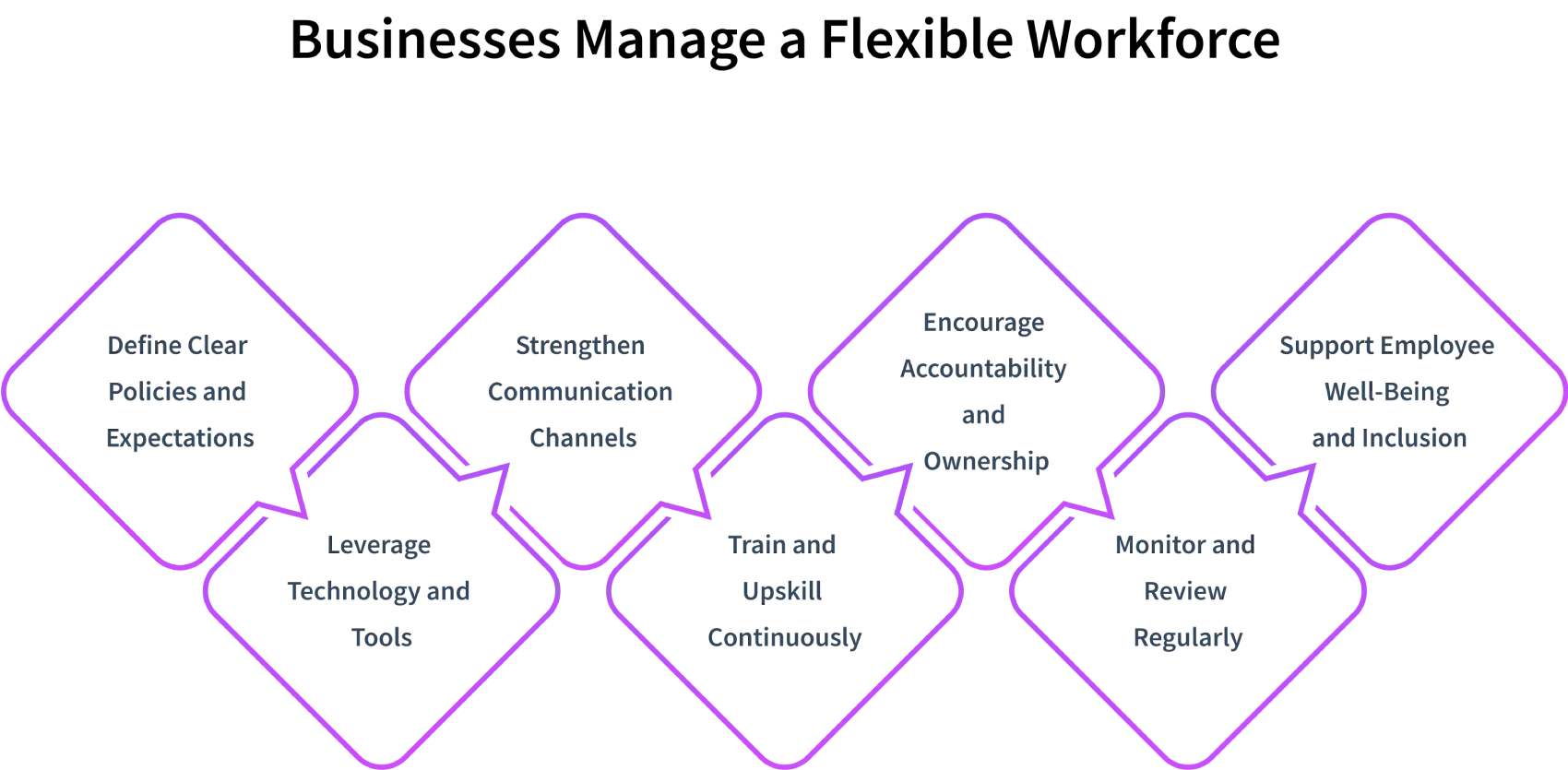
Managing a flexible workforce can be challenging without the right approach. This is how you can manage your teams effectively using a flexible workforce:
1. Define Clear Policies and Expectations
Begin by establishing limits in work schedules, communication guidelines, and performance expectations. Employees need to know what’s expected of them to work productively in flexible arrangements. Well-defined policies bring clarity, accountability, and ensure everybody works under the same guidelines.
2. Leverage Technology and Tools
Manage your workforce using workforce management systems, project trackers, and collaborative platforms to connect with your team. These tools enable you to have real-time visibility of activities, due dates, and performance, irrespective of the location of employees. It is important to invest in the correct technology to provide smooth coordination and smart decision-making.
3. Strengthen Communication Channels
Frequent and transparent communication is the backbone of a flexible workforce. Make regular check-ins and instant messaging to get frequent updates and establish open feedback. Strong communication avoids misunderstandings and also helps employees to feel encouraged and valued.
4. Train and Upskill Continuously
Promote cross-training and skills development to ensure your employees are able to perform other tasks as required. Ongoing training can quickly bridge skills gaps, creating a resilient workforce that adapts to changing demands. When individuals are provided with the appropriate skills, your organisation will be able to stay abreast during unpredictable periods.
5. Encourage Accountability and Ownership
Being flexible does not imply irresponsibility. Ensure that employees are evaluated based on results and not on the number of hours they spend online. Reward performance and keep employees accountable for their work. This freedom and responsibility bring trust and enhance performance.
6. Monitor and Review Regularly
A flexible workforce strategy requires ongoing management and regular adjustments. Test what works and what does not by analysing performance data, employee experiences, and productivity insights periodically. Continuous improvement keeps your flexible work model relevant, adaptable, and responsive to changes in business requirements.
7. Support Employee Well-Being and Inclusion
Flexibility should support and enhance employee well-being. Set boundaries to prevent employee burnout, ensure work-life balance, and hold employees equally to keep them accountable. With a positive culture, your workforce is motivated, retained, and engaged.
What are the Advantages of a Flexible Workforce?
Flexible workforce scheduling is the key to staying competitive. It helps you to quickly adapt, control costs, boost productivity, and build a stronger team.
Here are the advantages of a flexible workforce:
Adaptability to Change - Helps you to quickly respond to the market shifts, seasonal peaks, or unexpected projects.
Cost Efficiency - Cuts down expenses through recruiting employees when needed by avoiding overstaffing or understaffing.
Increases Productivity - Helps to distribute workloads among flexible staff and teams to work on important tasks.
Improves Employee Satisfaction - Gives your employees more control over schedules and work styles to reduce stress , increase motivation, and strengthen company loyalty.
Business Agility - Allows you to expand or adjust operations as the requirements evolve, which keeps them competitive in this market.
Faster Project Completion - Enables you to get seasonal talent, shortens timelines, and meets deadlines without overworking your full-time employees.
Global Talent Access - Connects you with a global resource of talent and allows you to recruit the best that brings diversity and innovation anywhere.
Risk Management - Keeps you steady when things get unpredictable by matching the size of your workforce with demands, cutting down the costs, and preventing unexpected layoffs.
What are the Disadvantages of a Flexible Workforce?
A study by the UK Government some employees feel that a flexible workforce leads to unfairness and disrupts team collaboration among employees. Here are the main disadvantages of a workforce model that every business should be aware of to manage teams effectively:
1. Communication Gaps
A flexible workforce can have problems with communication. This is particularly true when employees are working remotely or on different schedules. Messages can be lost without face-to-face interactions. Slow workflows can also be caused by delays in response. These issues usually result in confusion, less cooperation, and delayed decision-making.
2. Reduced Employee Loyalty
Contractual, part-time, or freelance workers may not feel the same level of loyalty as permanent staff. Since their relationship with the organisation is often short-term, they may lack long-term commitment and alignment with company goals. This can lead to a higher turnover rate and increased costs for constant rehiring and onboarding.
3. Management Complexity
Managing a combination of full-time workers, contractors, and freelancers is associated with enormous management challenges. The groups can have varying schedules, reporting models, and performance demands. Without efficient workforce management solutions, it is more difficult to track productivity, keep people responsible, and maintain consistency in the teams.
4. Data Security Risks
In remote and flexible work models, employees need to access company systems using devices and networks from outside the office. This raises the chances of data breaches, cyber-attacks, and compliance issues. In order to protect sensitive information, businesses have to spend a lot on IT security and strong policies.
5. Training and Skill Gaps
Temporary employees or freelancers might have no idea about the processes, tools, or culture of a company. They usually require additional training to meet the company standards. This slows the onboarding process and increases the potential of errors or ineffectiveness in their work.
How do Flexible Workforce Solutions Help Businesses Scale?
Flexible workforce solutions allow your business to expand without the inconvenience of a huge permanent staff. With part-time employees, freelancers, or contractors, you will be able to fill seasonal highs, project demands, or sudden increases in workload. This way, you only pay what you need and when you need it, making expansion more affordable and sustainable.
The appropriate tools are necessary to handle and track a diverse workforce to make scaling effortless. That is where Time Champ comes in. Time Champ is a workforce management software that will enable you to organise in-office and remote teams without any inconvenience, with the features of smart time tracking, productivity insights, and real-time performance monitoring . With Time Champ's flexible workforce solution, you can scale faster and build a smarter and more resilient business.
Conclusion
Flexible workforce management makes businesses competitive, agile, and efficient. With the right strategies, open communication, and constant training, you can be able to manage the teams well, increase productivity, and easily expand operations. This strategy develops a more resilient and flexible workforce that is capable of addressing and resolving upcoming challenges. Flexibility brings resilience, encourages innovation, and ensures business growth.
Frequently Asked Questions
The major indicators are the completion rates of projects, employee engagement index, time-to-hire in temporary positions, rate of absenteeism, and client satisfaction. Following these metrics can help to increase the effectiveness of your team.
Flexibility at work lowers stress, and it creates a better work-life balance. When boundaries are not clear, it spills into personal life and can result in employee burnout. Employers are advised to provide counselling and mental-health support, disconnect workplace instructions, and promote off-duty time among the employees.
Clear documentation, virtual training, mentorship programs, and early check-ins can shorten the time of onboarding and assist new employees in becoming part of teams.
Yes, with planning, flexible models can be suitable for client-facing roles. Part-time working, rotation of schedules, and collaboration tools enable client-facing without affecting the quality of the offered services. A dedicated point of contact can also be appointed so you have consistency and prevent weak relationships with clients.
Working tools based on AI, cloud-based cooperation, real-time performance tracking, and predictive scheduling are becoming essential. They simplify coordination, communication and productivity monitoring of flexible teams significantly.

